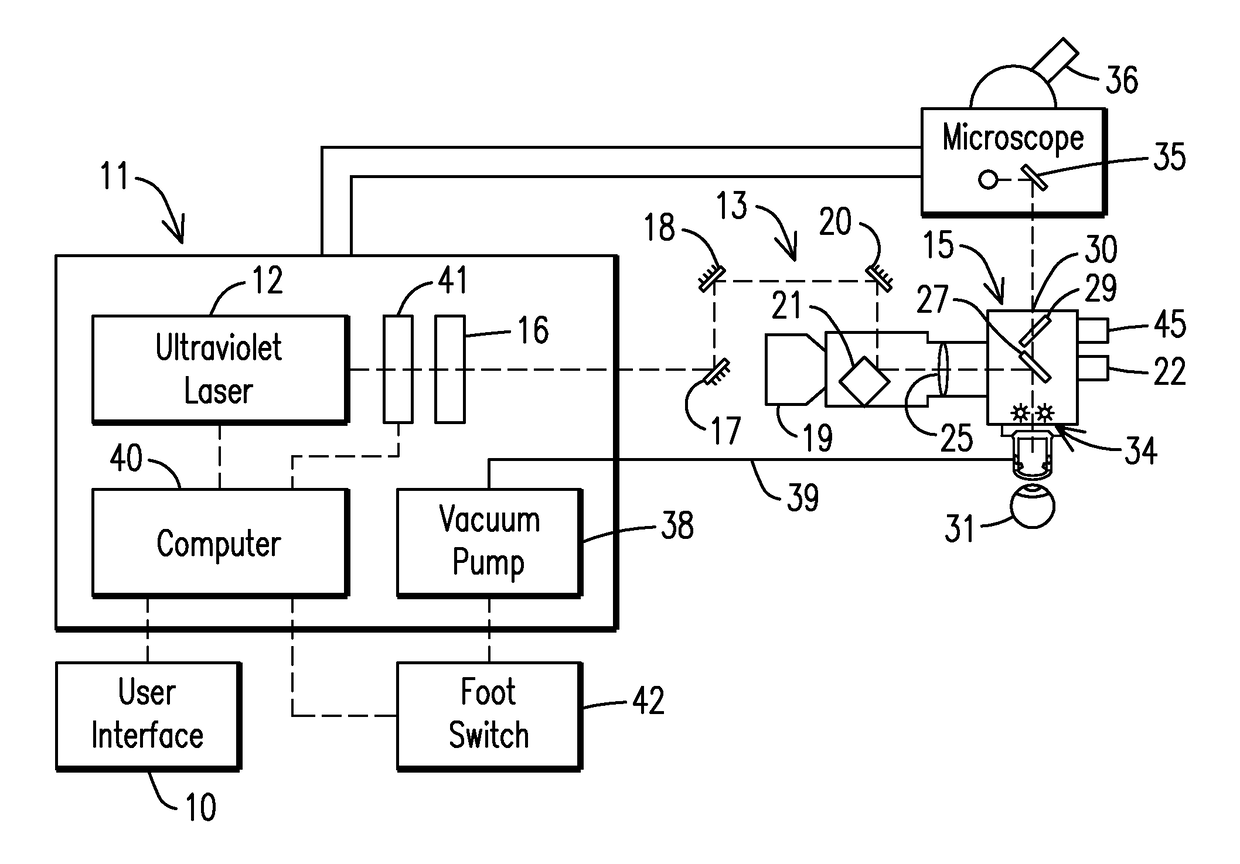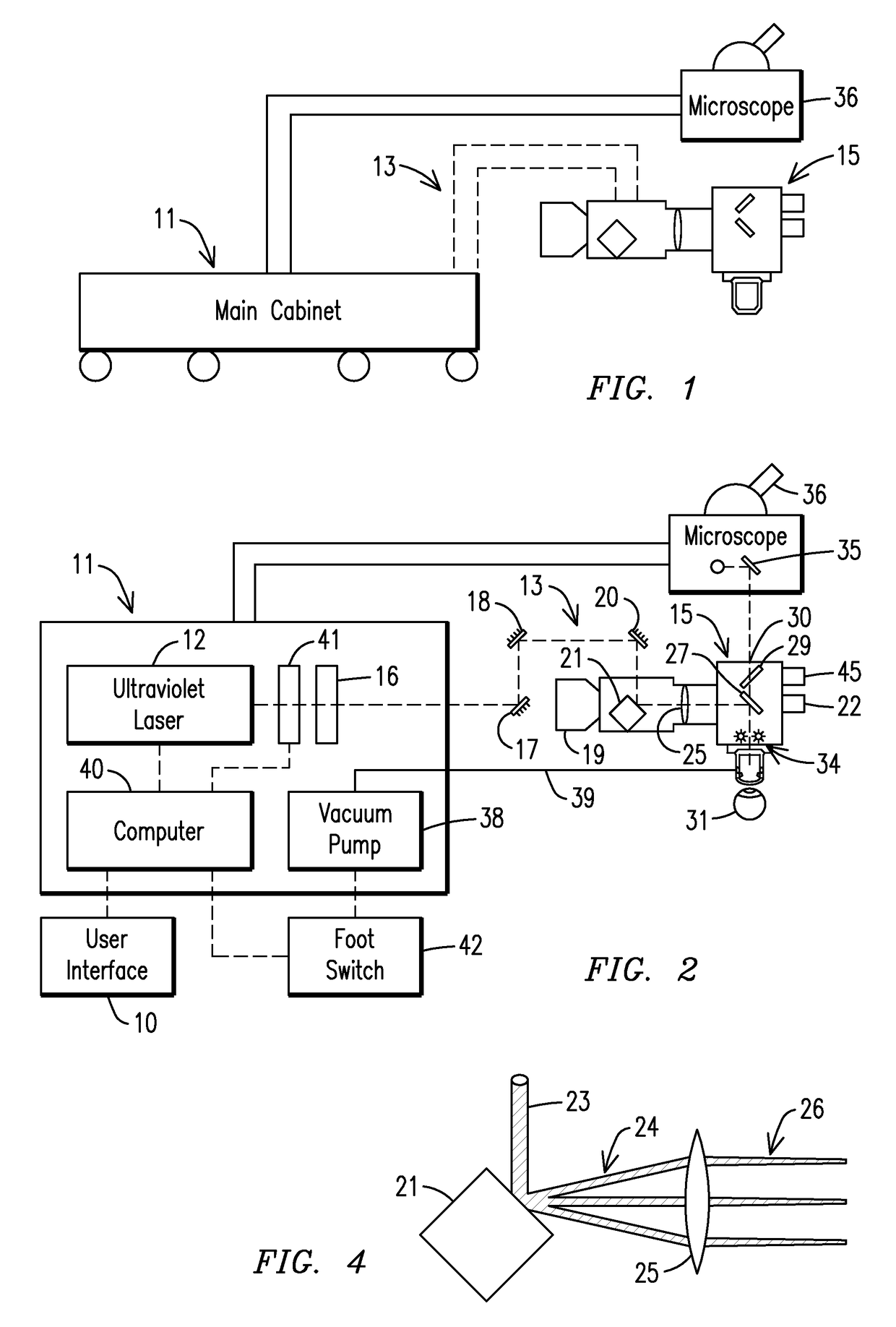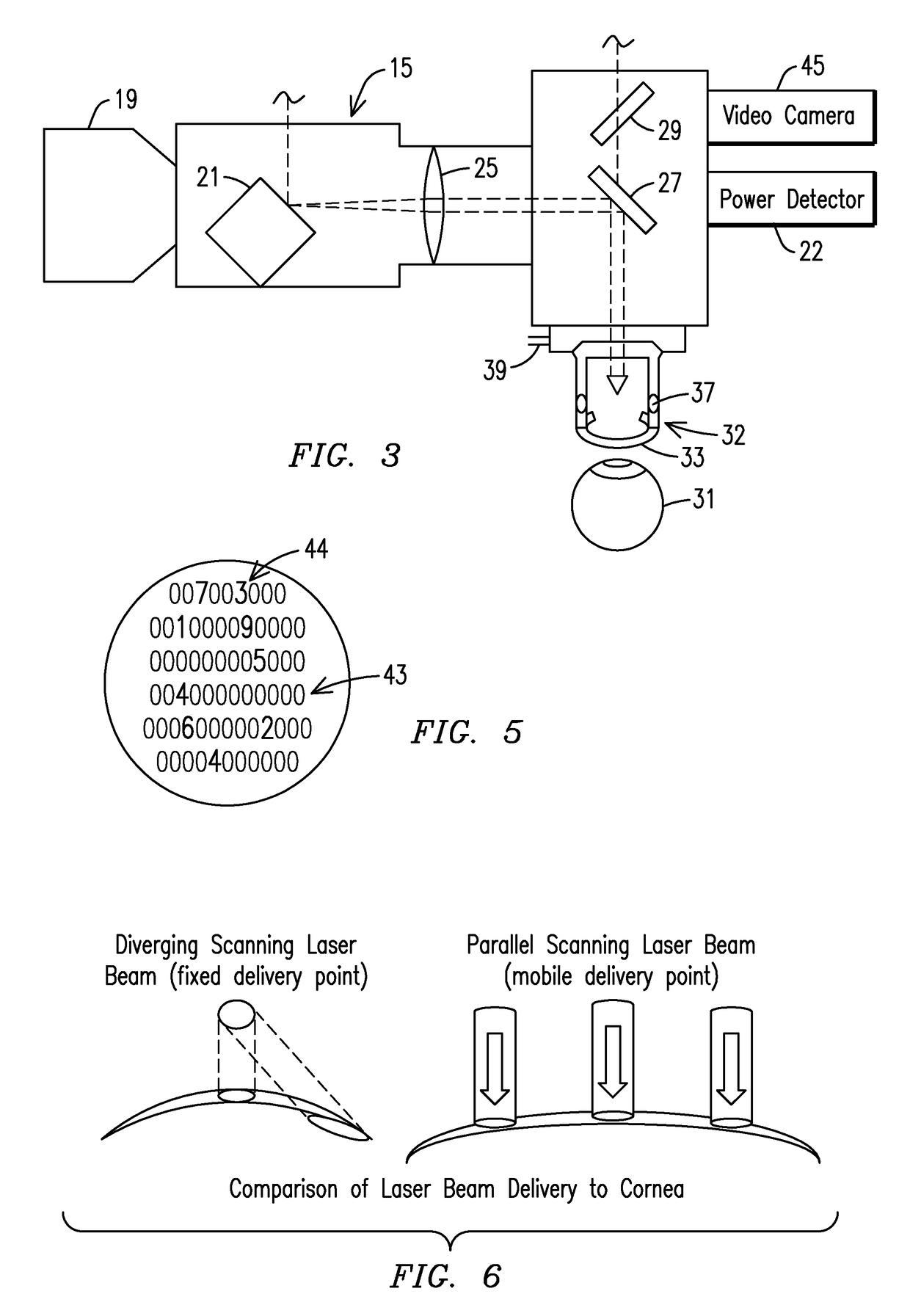Laser beam ophthalmological surgery method and apparatus
a laser beam and ophthalmological surgery technology, applied in the field of refractive eye surgery, can solve the problems of requiring significant effort for the surgeon to precisely align the beam, the bulky cabinet of the laser cabinet, and the inability of most advanced three-dimensional eye tracking systems to guide the laser beam to normal incidence, etc., to achieve the effect of facilitating surgery observation, reducing visible light noise, and enhancing image quality and processing capability
- Summary
- Abstract
- Description
- Claims
- Application Information
AI Technical Summary
Benefits of technology
Problems solved by technology
Method used
Image
Examples
Embodiment Construction
[0020]The laser ophthalmological surgery apparatus in accordance with the present invention as seen in the drawings, FIGS. 1 through 6, includes a user interface 10, in FIG. 2, connected to a main cabinet 11. Within the main cabinet, laser pulses are generated with UV laser 12 that is guided through an attached rotating mirror set module 13. The ophthalmological apparatus has a main cabinet and a hand piece module 15 connected to either end of the rotating mirror set module. The UV laser is positioned in the main cabinet 11 and has a laser beam output of laser pulses. A laser beam homogenizer 16 is positioned to homogenize the laser beam to smooth out irregularities in the laser beam before it is directed through the rotating mirror set module.
[0021]A method of ablating eye tissue, as illustrated in FIGS. 2 through 4, generates a pulse laser beam from an UV laser 12. The laser beam passes through the rotating mirror set module 13 having mirrors 17, 18, 20 (for demonstration; can hav...
PUM
 Login to View More
Login to View More Abstract
Description
Claims
Application Information
 Login to View More
Login to View More - R&D
- Intellectual Property
- Life Sciences
- Materials
- Tech Scout
- Unparalleled Data Quality
- Higher Quality Content
- 60% Fewer Hallucinations
Browse by: Latest US Patents, China's latest patents, Technical Efficacy Thesaurus, Application Domain, Technology Topic, Popular Technical Reports.
© 2025 PatSnap. All rights reserved.Legal|Privacy policy|Modern Slavery Act Transparency Statement|Sitemap|About US| Contact US: help@patsnap.com



